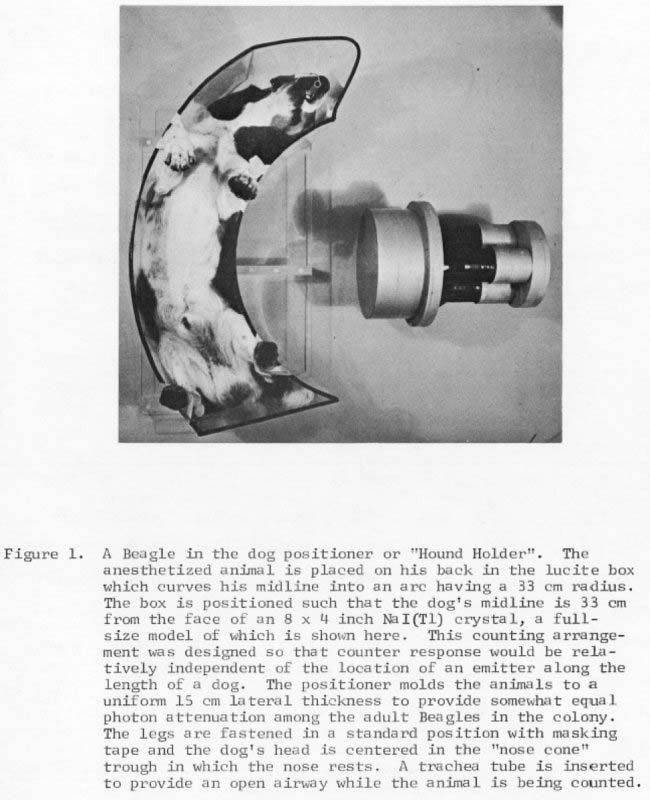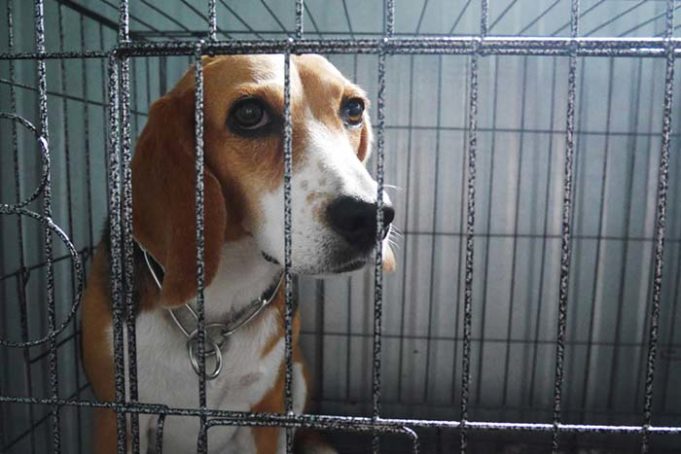Animal cruelty and abuse of laboratory dogs is nothing new for pet owners aware of these problems, but did you know that beagles are some of the most oft-tested and experimented on breeds in laboratories?
Table of Contents
- Beagles in Lab Experiments
- 1. Beagles are most preferred for their good characteristics
- 2. The University of Utah is the first institution to establish a program for experimenting on beagles
- 3. The university's lab quickly became overcrowded
- 4. “The Beagle Project” was established
- 5. The beagle breed was made to suffer
- 6. Media coverage for the experiments described the lab studies as “painless”
- 7. Beagle experiments soon spread to other institutions
- 8. The Animal Welfare Act was enacted in the mid-60s
- 9. Beagle breeding facilities grew
- 10. The experiments yielded no useful data
- 11. Amost 60,000 dogs have been experimented on as recently as 2019
- 12. Current lab experiments make use of shelter mutts if there are no beagles
- 13. Dogs bred in experimental labs have similar complex emotional issues
- 14. Statewide laws have been enforced to end animal testing
Tens of thousands of beagles have been in animal experiments since the 1950s.
As noted by the Rescue + Freedom Project, this breed, with its lovable nature, has a long history of suffering at the hands of studies funded by the government and private companies.
Here’s a timeline of how beagles became the chosen test subjects in lab experiments.
Beagles in Lab Experiments
1. Beagles are most preferred for their good characteristics
The characteristics that make beagles wonderful pets are the same characteristics that make them ideal for lab experiments.
Many scientific journals published during the Cold War highlighted that beagles have the right size, physical traits, temperament, and behavior as test subjects.
Apparently, their gentle and docile nature made them easier to work with, so most researchers preferred these dogs.
2. The University of Utah is the first institution to establish a program for experimenting on beagles

In 1951, the University of Utah purchased eight beagles from a breeder in Weston, West Virginia.
By the following year, the institution had 61 beagles acquired from different backyard breeders around Salt Lake City.
The university then bred their own beagles in laboratories. Pregnant dogs would be subjected to cesarean sections the moment the puppies were ready.
This made it possible for the scientists to impregnate the mothers again to have more beagles to be experimented on.
3. The university's lab quickly became overcrowded
A few years later, the university had over 300 beagles for its experiments.
These animals lived in an overcrowded space that was supposed to be for a maximum of 200 dogs only.
The dogs were fed mostly horse meat to save on cost
4. “The Beagle Project” was established

In the 1960s and through the '70s, the University of Utah and the Atomic Energy Commission created “The Beagle Project.”
More than 600 dogs were used as test subjects for radioactive toxicity experiments.
5. The beagle breed was made to suffer

During the experiments, the beagles were injected with radioactive elements like plutonium and radionuclide.
The dogs were deliberately made to suffer from the poisonous effects.
The poor animals developed disfigurations, frequent fractures, loss of teeth, and bone tumors.
Worse, the beagles that were exposed to higher levels of radioactive substances and experienced severe suffering were not euthanized.
The researchers wanted to determine their exact lifespan with the radiation.
6. Media coverage for the experiments described the lab studies as “painless”

The Beagle Project made the headlines, but these were mostly fake news from the university.
One article that ran in the magazine Mechanix Illustrated described that the experiments were painless.
It did not mention anything about the dogs that died or were dying.
7. Beagle experiments soon spread to other institutions

The Atomic Energy Commission also made deals with other institutions to experiment on beagles.
It funded other studies from the University of California-Davis, Colorado State University, Pacific Northwest Laboratory, Argonne National Laboratory, and the Lovelace Respiratory Research Institute.
All in all, the commission gave more than $1 billion to these research labs. More than 7,000 beagles suffered and died in the experiments.
8. The Animal Welfare Act was enacted in the mid-60s

The Animal Welfare Act (AWA) came out in 1966.
It stated that all forms of animal experiments, including those done on dogs, are legally permissible.
The law, however, required certain standards for humanely treating dogs in the laboratories.
However, the conditions of these standards were minimal and still did not protect the rights of the animals.
9. Beagle breeding facilities grew
By the mid-1970s, commercial beagle breeding facilities grew around the U.S.
Thousands of beagles were bred to supply the research industry, and thousands more were killed.
10. The experiments yielded no useful data
Despite the studies done on the beagles, there was no useful data that the commission could use to ascertain the health of humans during the Cold War.
Animal activists point out that the death of the beagles seemed pointless, but the experiments still continued.
A former lab scientist who worked in these animal laboratories wrote an op-ed piece in the San Diego Union-Tribune to confirm that the experiments were useless to humans.
Lawrence Hansen said that at least 95 percent of the tests on animals failed the human tests.
11. Amost 60,000 dogs have been experimented on as recently as 2019
Based on the Animal Research Statistics in the US, at least 58,511 dogs were used in laboratories in 2019.
Most of these experiments were not medical in nature but for commercial purposes.
They were tested for the side effects of pesticides, detergents, and industrial chemicals.
However, the U.S. government still deems these methods legal under the AWA.
12. Current lab experiments make use of shelter mutts if there are no beagles
Though beagles still remain the most preferred choice for lab experiments, shelter dogs that have not been adopted are also being turned over to researchers today.
The University of Utah, in fact, makes purchases of mutts from shelter sites, according to an investigation by the People for the Ethical Treatment of Animals (PETA).
13. Dogs bred in experimental labs have similar complex emotional issues
Deprived of companionship, dogs that were raised in the labs manifest the same emotional problems.
These animals never experienced love in the same way as family pets.
Some have never even experienced playing on grass or sniffing the air outdoors because they've been mostly cooped inside laboratories.
14. Statewide laws have been enforced to end animal testing
Some states have started enacting laws that ban the testing of animals for beauty or personal care brands if there's an alternative for humans, such as stem cell tests.
A law to put an end to animal testing, which covers all states, however, is still pending in Congress.
Many things have changed since beagles first became lab subjects in the 1950s, but there’s still a long road ahead in the fight against animal testing.
You can help by spreading stories about the plight of these beagles and other animals in cramped labs to raise awareness and educate the public.
How to help: Visit the Beagle Freedom Project website to see how you can help.
This US-based non-profit organization has many educational pages and more information on how, why, and what's happening with Beagles and many other dogs in laboratory tests.
You can also visit the pages for whistleblowers, donations, and other ways people can assist in stopping animal cruelty and unethical animal testing in lab experiments.
READ NEXT: 12 Horrifying Facts About the Lives of Laboratory Dogs













